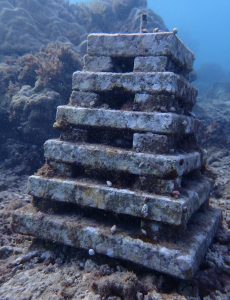Coral reefs are some of the most biodiverse ecosystems on the planet, providing crucial habitat for marine life and protecting coastal regions from erosion. Yet, these vibrant ecosystems are increasingly under threat due to climate change, pollution, and human activities. Effective monitoring of coral reef health is essential for understanding the state of these ecosystems and guiding conservation efforts.
Traditional monitoring methods, though valuable, often lack the scalability and precision needed to track large-scale changes in coral reefs over time. Enter ReefShape—a groundbreaking photogrammetry tool developed by the Perry Institute for Marine Science. In a recent webinar led by Will Greene, a photogrammetry specialist, the potential of this innovative technology to revolutionize coral reef monitoring was showcased. This in-depth article explores the advantages of Reef Shape, its applications, and how it addresses long-standing challenges in the field of marine science.
Our latest webinar featuring photogrammetry expert Will Greene discussing Reef Shape, an innovative tool revolutionizing coral reef monitoring and conservation efforts.
The Dawn of ReefShape: Revolutionizing Coral Monitoring
The core of this webinar was ReefShape, a cutting-edge photogrammetry system designed to enhance coral reef monitoring on a large scale. Will Greene introduced this tool as the culmination of his efforts since 2019, with a clear goal: to improve how scientists assess reef health over time.
Traditional coral monitoring methods, such as diving with pen and paper or performing line transects, though still effective for certain applications, can be labor-intensive and inconsistent when applied across large reef systems. ReefShape tackles these issues by creating high-resolution digital replicas of coral reefs. These detailed, three-dimensional models offer a more accurate and scalable method for tracking reef health, structural complexity, and biodiversity. The digital nature of Reef Shape also opens up exciting new possibilities for long-term data storage, analysis, and global collaboration.
Key Features of ReefShape
Reef Shape boasts several advanced features that make it a game-changer for coral monitoring:
1. Photogrammetry Technology
At the heart of Reef Shape is photogrammetry—the science of extracting 3D information from overlapping 2D images. By stitching together thousands of high-resolution photographs, Reef Shape creates “photomosaics”—large composite images of reef structures that can be studied in unprecedented detail. Additionally, the system can generate elevation maps, 3D models, and two-dimensional orthomosaics (top-down views) that allow researchers to observe reefs from multiple perspectives.
2. Human-Scale Monitoring
Unlike satellite or aerial remote sensing technologies, which are ideal for observing large swaths of ocean but lack fine detail, Reef Shape focuses on human-scale monitoring. It is designed to capture areas up to several hundred square meters—the size of an average reef plot. This precision makes it easier to study coral health, biodiversity, and physical changes at the level most relevant to researchers and conservationists.
3. Time Series Monitoring
One of Reef Shape’s most powerful capabilities is its ability to track reef changes over time. Using permanent markers placed underwater, researchers can repeatedly return to the same locations, collect new data, and layer it over previous data sets. This allows for a highly accurate assessment of reef growth, decay, and overall structural changes. The time-series monitoring aspect is crucial for understanding the impacts of climate change, coral bleaching events, and the effectiveness of restoration efforts.
4. Data Flexibility & Longevity
With Reef Shape, the data collection process doesn’t end once the images are captured. Photographic data can be stored digitally and re-analyzed as new scientific techniques or questions arise. Whether it’s studying reef complexity, coral health, or fish populations, researchers can revisit the same data without needing to recollect it, saving time and resources while maximizing the value of each dive.

Overcoming the Challenges of Coral Monitoring with Reef Shape
The introduction of Reef Shape directly addresses several long-standing challenges in coral reef monitoring:
1. Scalability
Traditional reef monitoring methods often struggle with scalability. Techniques like line transects or diver assessments require significant time and effort to cover even small reef areas, and are difficult to replicate across large reef systems. Reef Shape, by contrast, enables scientists to capture vast sections of a reef in a fraction of the time, improving the efficiency and scope of monitoring efforts.
2. Permanent Data Collection
Many traditional methods rely on human observation, which can be prone to error and difficult to replicate over time. Reef Shape’s digital photogrammetry stores permanent, high-resolution images that can be analyzed multiple times and used to generate a wide range of insights. This means that once the data is collected, it can serve a variety of research purposes, both immediately and in the future.
3. Automation and Accessibility
Reef Shape also introduces a higher level of automation into the monitoring process. While manual stitching of images and 3D model building can be time-consuming, Reef Shape’s custom scripts streamline these processes, making them faster and reducing the need for constant manual input. This efficiency lowers the barrier for scientists and conservationists to adopt the technology and makes the monitoring process more accessible across diverse regions.

The Tools Behind Reef Shape
Reef Shape’s powerful capabilities depend on the right combination of tools and technologies. Here’s a breakdown of the essential equipment needed for a successful photogrammetry-based reef monitoring campaign:
Cameras: Wide-angle cameras, such as the Sony a6600, are recommended for taking high-resolution images at regular intervals. These cameras, often set to capture images every second, help ensure comprehensive coverage of the reef.
GPS Devices: GPS systems attached to a snorkeler or buoy assist with georeferencing the images. This ensures that the location of each photo is accurately tracked, making it possible to stitch the images together into a seamless 3D model.
Markers and Scale Bars: Unique corner markers and scale bars are placed on the reef to provide consistent reference points, ensuring accurate measurements and allowing for precise comparisons across different time points.
Once the photos are collected, the images are processed using Agisoft Metashape, a powerful photogrammetry software. ReefShape comes with custom scripts to automate much of this process, making it possible to analyze up to 3,000 images per reef plot, generating 3D models and photomosaics with remarkable detail.
A 3D map of a coral reef in The Bahamas, created through photogrammetry and seamlessly stitched together from hundreds of high-resolution images.
Applications of Reef Shape in Coral Conservation
The potential applications of ReefShape extend far beyond traditional coral monitoring. This innovative tool has the capacity to transform multiple areas of marine science and conservation:
1. Coral Restoration Monitoring
Restoration projects often struggle to quantify their success over time. ReefShape enables highly detailed monitoring of restoration efforts, tracking the growth of new coral structures, assessing biodiversity, and evaluating the overall health of rehabilitated reefs.
2. Biodiversity and Health Studies
With the ability to capture large reef areas in high resolution, ReefShape provides valuable data for studying biodiversity, coral health, and the impacts of environmental stressors like coral bleaching or disease outbreaks. Researchers can quickly assess the spread of bleaching events or monitor the health of entire ecosystems.
3. Public Education and Engagement
ReefShape’s photorealistic 3D models can be used to create virtual or augmented reality experiences, allowing the public to explore coral reefs in immersive detail. This can be a powerful tool for education and advocacy, helping people understand the importance of coral reefs and the urgent need for their protection.

A Future Shaped by Photogrammetry
In the rapidly evolving field of coral reef conservation, Reef Shape offers a glimpse into the future of marine science. By making reef monitoring more scalable, efficient, and accurate, this photogrammetry-based tool has the potential to provide the data needed to protect and restore coral reefs on a global scale.
For researchers and conservationists looking for a more advanced way to monitor reef health, Reef Shape is a game-changing tool that addresses the limitations of traditional methods. With its ability to track changes over time, capture detailed 3D models, and store data digitally for future analysis, Reef Shape is set to revolutionize how we study and protect one of the planet’s most vital ecosystems.
To learn more about ReefShape and access its custom scripts, visit the Perry Institute for Marine Science GitHub page. For the latest updates on coral conservation efforts, follow us on social media.
Frequently Asked Questions (FAQ)
What is coral reef monitoring and why is it important?
Coral reef monitoring involves tracking the health of coral reefs to assess biodiversity, structure, and ecosystem function. It is essential for conservation efforts to combat threats like climate change and pollution.
How does photogrammetry improve coral monitoring?
Photogrammetry allows for the creation of detailed 3D models of coral reefs, offering more accurate and scalable data than traditional methods.
What equipment is required for coral photogrammetry?
Photogrammetry requires high-resolution cameras, GPS systems for georeferencing, and software like Agisoft Metashape to process the images.
Can Reef Shape track coral reef changes over time?
Yes, Reef Shape’s time-series monitoring allows researchers to revisit and compare reef health across different periods.

A Year Later, Stranded Tug and Barge Still Scars Reef in Fowl Cays National Park–Residents Demand Accountability
A haunting aerial view of the grounded tug and barge in Fowl Cays National Park—still embedded in coral a year later, a stark reminder of the cost of inaction. Photo

Women Leading Mangrove Restoration in The Bahamas
Have you ever wondered who’s behind the scenes saving our environment, right in our own backyard? Picture a group of energetic, determined women rolling up their sleeves and diving into

Rewilding the Marls of Abaco: PIMS Plants 100,000 Mangroves and Counting in 2024
As the afternoon sun bathes the Marls of Abaco in golden light, Bahamian boat captain Willis Levarity–locally known as “Captain to the Stars”–stands ankle-deep in soft, warm mud. A broad

Unveiling Coral Reef Biodiversity: Insights from ARMS Monitoring Structures
An ARM teeming with new coral recruits and a diversity of marine life, highlighting reef recovery and biodiversity Understanding Coral Reef Biodiversity Most new PhDs in the natural sciences move

7 Key Takeaways from COP16: Confronting Coral Reef Challenges in a Changing Climate
United #ForCoral: Experts, advocates, and leaders from across the globe join forces at COP16 for the #ForCoral conference, hosted by the International Coral Reef Initiative. Together, they’re driving urgent action

Fieldwork Wrap-Up: Strengthening MPA Management in The Bahamas
Marine protected areas (MPAs) are critical tools in the conservation of marine species and habitats, safeguarding reefs, seagrasses, and mangroves that provide vital ecosystem services to coastal communities. At the




